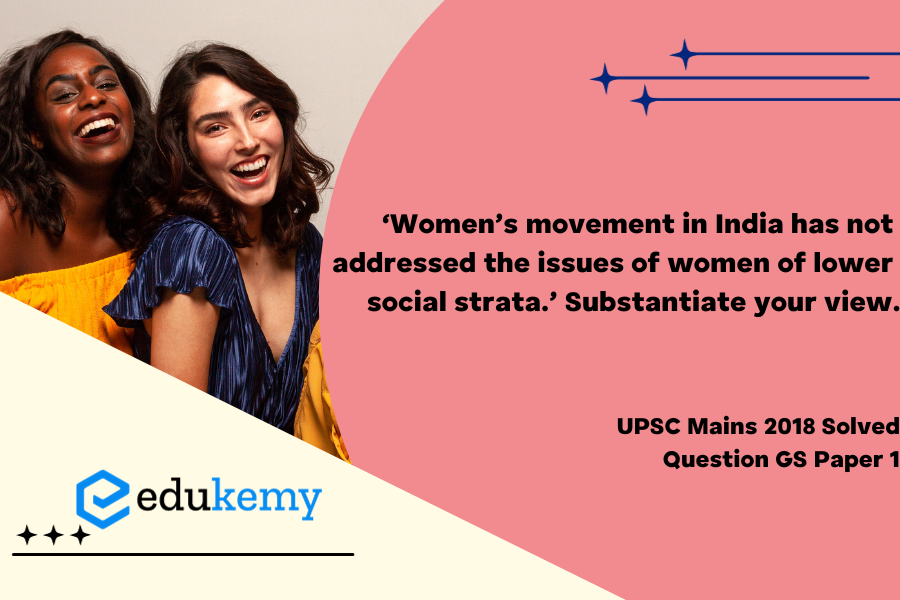The women’s movement in India, while making significant strides in advocating for gender equality and women’s rights, has often been critiqued for its limited focus on addressing the multifaceted issues faced by women belonging to lower social strata. The movement has predominantly emerged from urban, educated, and relatively privileged sections of society, leading to an inherent bias in its priorities and agendas. Issues such as access to education, healthcare, and economic opportunities, which are particularly acute for women in marginalized communities, have not received adequate attention. Furthermore, the movement’s discourse has largely been centered around concerns relevant to middle-class women, neglecting the unique challenges faced by those at the bottom of the social hierarchy. The absence of inclusive perspectives and representation from diverse socio-economic backgrounds within the women’s movement has resulted in a gap in addressing the intersecting oppressions faced by women in lower social strata, hindering the movement’s effectiveness in achieving comprehensive gender justice.
Tag: Role of women and women’s organization.
Contents
Decoding the Question:
- In the Introduction, try to write briefly about the condition of women in India.
- In Body, elaborate how the Women’s Movement in India has not addressed the issues of women of lower social strata.
- Conclude with mentioning government schemes to address this issue.
Answer:
Women’s status in society has remained lower than men for a very long time now. The reason for how this disparity came into existence is not clear, but it put women at a disadvantage, leaving them dependable on men for several things. In India, women bore the brunt of evil practices including, but not limited to, sati, purdah system, female foeticide & infanticide, and child marriage. Though the Constitution of India has enshrined several provisions (Article 16, Article 17, Article 46, etc.) for Dalit communities to safeguard and promote their socio-economic status to bring them back in the mainstream of the population, the exclusionary mechanism of entrenched hierarchical social relations has brought differential outcomes for women belonging to vulnerable groups.

Conditions of Women of Lower Social Strata Politically, Economically and Socially:
- Women continue to have unequal access to land and other resources. Compensation policies in case of displacement are inevitably discriminatory towards women of lower strata due to multiple reasons such as lack of awareness, education, ownership of land, etc. Women from these sections also find it more difficult to get loans.
- Women of lower social strata are forced to enter the labor market at a very early age to sustain their families. Traditionally allocated menial and stigmatized works are generally assigned to them. This process of systematic denial further ensures their exclusion from socio-political scenarios and keeps them restricted to the bottom of society as invisible citizens.
- After Independence, neither the women’s organizations nor activists addressed caste and gender intersectionality. Dalit movement became ‘masculinized’ and women activists started treating women as a homogenous group.
- For women, especially those from marginalized communities, it is getting increasingly difficult to access economic resources due to biased customary laws and patriarchal norms and is perpetuated by gender-blind policies which have exacerbated the obstacles that women confront and made them vulnerable to food insecurity—malnutrition, chronic hunger, and starvation.
- Sexual and domestic violence is mainly perpetrated against women from lower caste and poor women but this issue has not acquired center-stage in the discourse of women movements.
- Political Participation and Empowerment: Women from lower strata are politically marginalized, but rural women especially Dalits and tribals are given even less of a voice in the decision-making process. The reservation system is in force for SCs/STs to have seats in the local panchayat or to protect their rights (town assembly). However, the role being played by SC/ST women is consistently subordinated to their male counterparts.
However, there is also a counter view that the urban, middle-class women are one of the participants in the movement. It is rather the poor women who are the backbone of the movements, exemplifying the presence of poor women in the anti-alcohol agitation in Andhra Pradesh, and other parts of India. Similarly, the movement to protect the environment was started by poor women in Reni village of Uttarakhand and thereafter, it spread to other parts of the country. The achievement of equal status for women was one of the specific objectives implicit in the Preamble, Fundamental Rights, and Directive Principles of the State Policy in the Constitution of India. Government schemes like the Beti Bachao Beti Padhao, and the Dhanlaxmi scheme are small steps in improving the sex ratio and education for women. But there is a need for the promulgation of the provision as an untouchable free country through a constructive plan of action effectively. The discriminatory laws, traditional practices, and dogmatism against lower-strata women should be abolished by providing them the social security for their rehabilitation.
In case you still have your doubts, contact us on 9811333901.
For UPSC Prelims Resources, Click here
For Daily Updates and Study Material:
Join our Telegram Channel – Edukemy for IAS
- 1. Learn through Videos – here
- 2. Be Exam Ready by Practicing Daily MCQs – here
- 3. Daily Newsletter – Get all your Current Affairs Covered – here
- 4. Mains Answer Writing Practice – here


